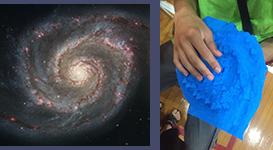Textured Tactile 3D Prints of Astronomical Data for the Career Exploration Lab and Other Applications
Description
Astronomy has been a fascinating subject for the public for centuries and can stimulate deep questions not only on our own origin but subtly the richness of science and mathematics. It also is a science that is associated with engineering and technology to probe the universe.Typically, astronomical data is translated into visual representations for analysis and general public communication. Unfortunately, this practice is problematic for individuals with blindness or visual impairment (B/VI). In response, we transformed astronomical research data and models into textured 3D prints for tactile exploration of imagery. These materials were thoroughly tested, step by step throughout development, over many years, utilizing standard usability testing commonly used in industry and elsewhere. We further pilot tested the 3D prints in a variety of forums, workshops, conferences, and STEM camps for students with B/VI.
These materials are used in the Career Exploration Lab, funded by ITEST, as well as other environments. The 3D prints are available through a custom website, with descriptions of the testing, print techniques, and documentation. These prints are also available through the NASA 3D website, under Contributions - via a search for either Christian or Madura. One of many outcomes of our projects is that 3D printing has been quite useful in showcasing scientific data (largely from Hubble Space Telescope and James Webb Telescope) to the general public for understanding and appreciation of science. Holding a galaxy, a star cluster, or a model of the Sun resonates well with even the most casual interest in astronomy.
Resources submitted by ITEST projects may be hosted on third-party sites or require a fee or membership for access. Permission to use these materials must be obtained from the publisher or the author listed on each resource.
